When DJI comes out with something new, it always makes news, and its new Inspire 2 is the hot ticket right now. Improving on a well-built and tested design, the Inspire 2 is a little bigger and faster than its predecessor. We tested out the package that came with the Zenmuse X5S and two transmitters.
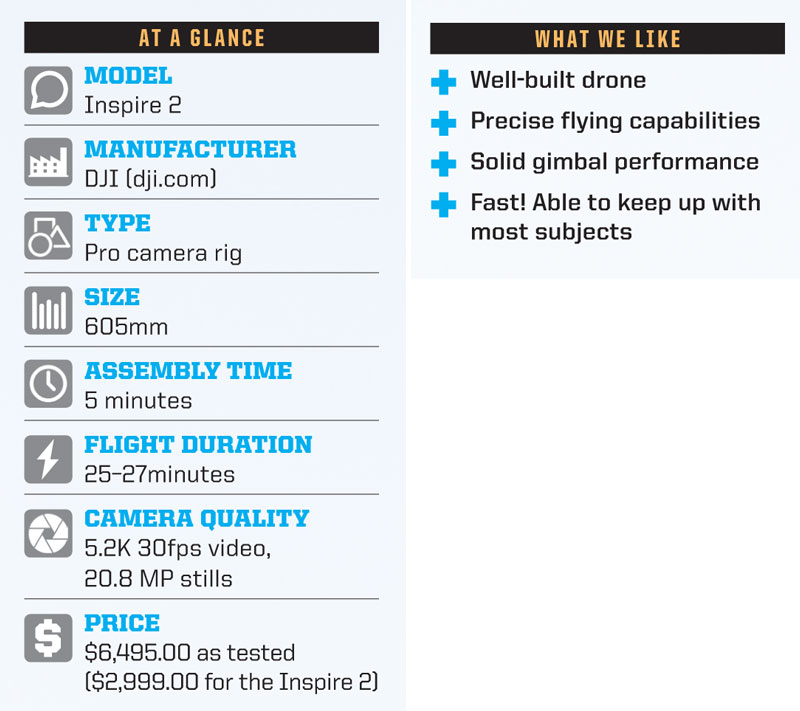
Highlights
The Inspire 2 comes in a nice case that holds everything you need for a successful flight: the Inspire, two transmitters, a Zenmuse X5S camera and case, up to four batteries, a charger, and extra props. Setup only involves starting the transmitters, installing the two battery packs (one of the updates is that the Inspire 2 uses two flight batteries), pressing the start button five times to get the quad from storage configuration to landing configuration, and finally attaching the X5S camera and props.
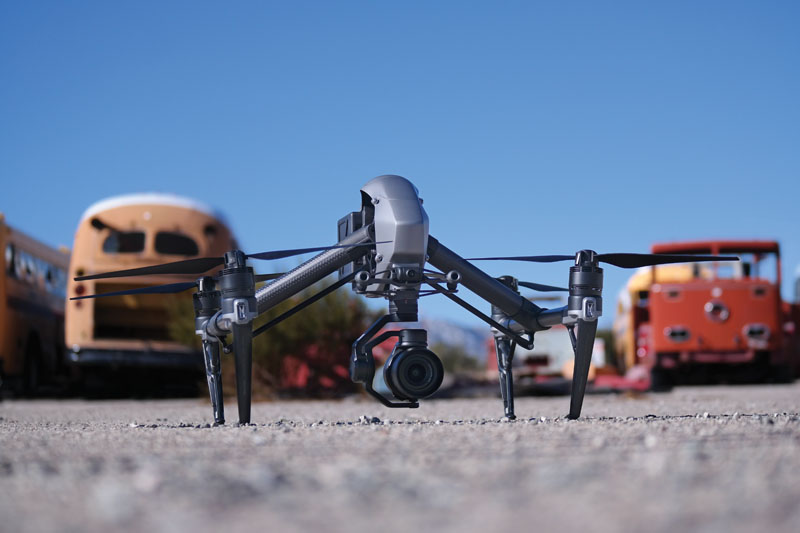
Low rider: The landing configuration has just enough room for the camera to clear the ground.
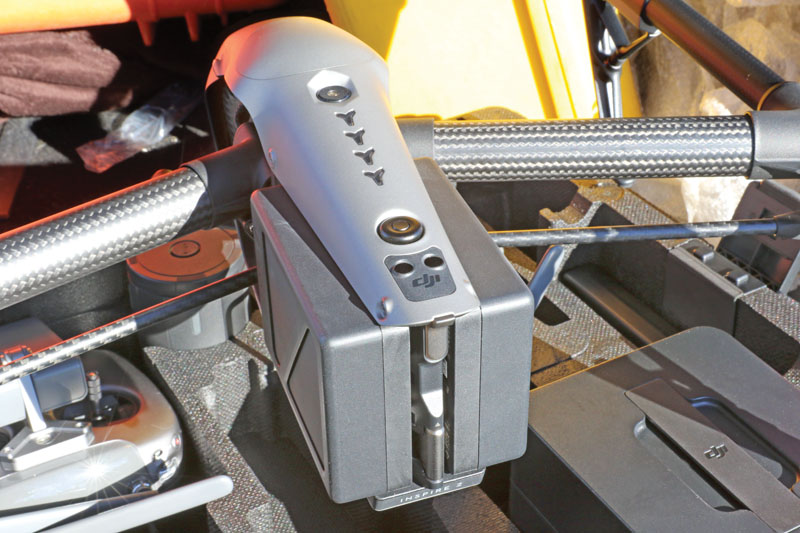
Battery packed: Twin battery packs now provide more flight time and redundancy.
One of its new features is an obstacle-avoidance system that can detect obstacles up to 30 meters ahead, which means protection at up to 35mph. I can say that, from our flight, this works quite well. The Inspire 2 also has much larger motors and props to lift the larger overall bird, and it has a top speed of 58mph in Sport mode. Recorded video can now be stored simultaneously on the DJI Cinessd, inside the fuselage between the batteries, and an easily accessible micro SD card.
Some of the flight-program improvements include Spotlight Pro, which allows a single pilot to capture complex images that used to require a dedicated camera operator. When flying by myself, I found this feature to be very helpful. TapFly uses the onboard FPV camera to show a separate view from the main camera; just tap the route for the Inspire to fly and you can concentrate on the main camera. ActiveTrack programs the Inspire to follow objects moving through the environment while keeping them in frame.
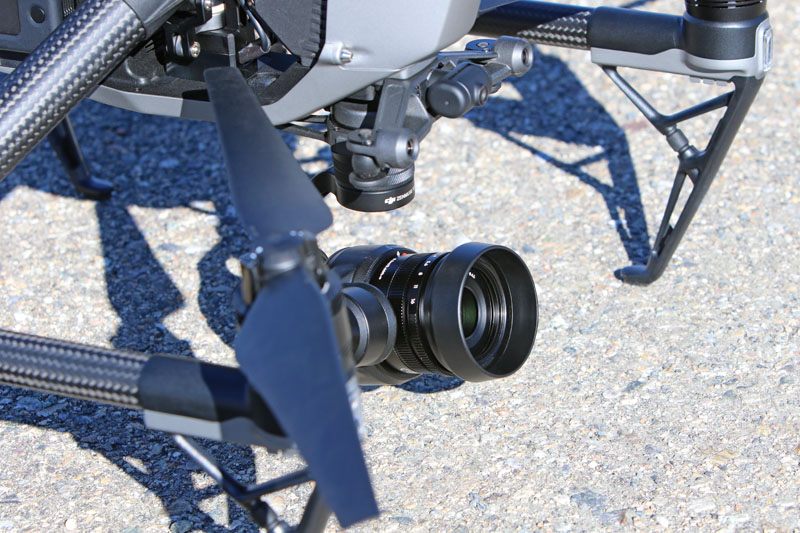
This small camera does the job of many larger production cameras, and it has a dynamic range of 12.8 stops, great for postproduction.
Aerial Recap
I have to say that flying the Inspire 2 was fun. It is very precise in the sky, and it’s easy to get it from one point to the other. Then there is the speed at which this bird can fly. In most cases, you don’t really want that much speed because the shot will look rushed, but the gimbal does an excellent job of maintaining a nice level and smooth video, even when in Sport mode and while doing some very aggressive flying. Flying with a dedicated camera operator allowed me to concentrate on a nice, smooth flight, working around our subject and getting the Inspire in the right position. But I have to say that the new flight modes did make it easier to fly as a single pilot to capture some great video.
There was never a minute that I did not feel comfortable flying this quad. Even flying close to the ground at high speeds was easy because of the Inspire 2’s solid feel and control. I followed a fast-moving vehicle and really had no problem at all keeping up and staying on top of it. Even if you should lose your orientation on the drone, the Return to Home function requires just the push of a button and the Inspire will come back, avoiding obstacles along the way as it returns.
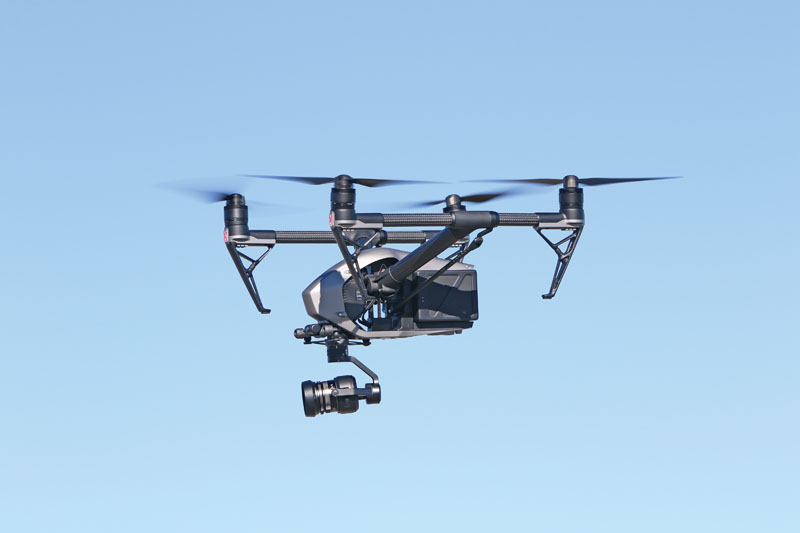
Getting the Shot
Flying with a dedicated camera person is the best way to improve your cinematic production, but it really does take practice—and more practice—to get it right. The first thing to do is to make sure that both of you know each other’s jobs very well. Having a pilot that knows how to shoot and a camera person who knows how to fly will really improve your image captures. In addition to that, you will need a dedicated person to be the spotter; this will allow the pilot to concentrate on flying the drone.
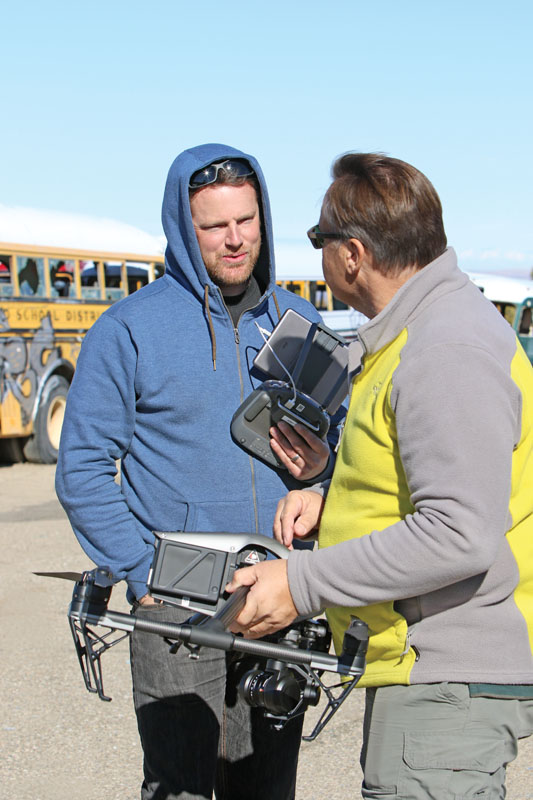
Communicating is essential before the flight to make sure that each person knows what to do.
The Bottom Line
Perhaps the biggest drawback to this rig is the price: You will have to shell out about $6,500.00 to get the setup we tested. But if you want a solid-flying quad that can produce top-quality video and images, this is the bird you want.



















